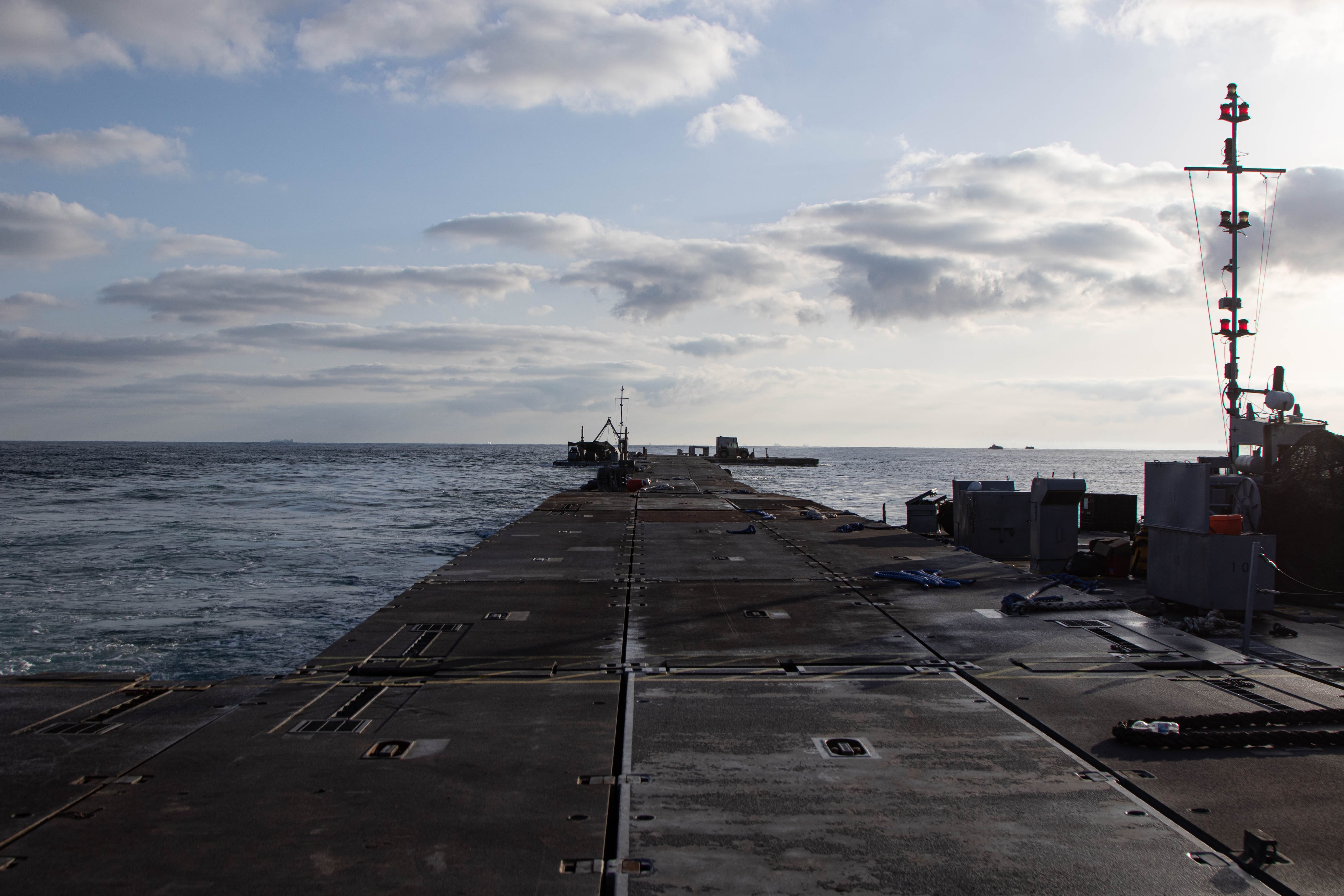Just weeks after the U.S. military dismantled its aid pier off the Gaza Strip, ending its mission there, the Pentagon’s internal watchdog has launched an investigation into the capability used to build the pier.
In a memo this month, the Defense Department’s Office of the Inspector General announced plans to assess how the military uses and fields joint logistics over-the-shore, or JLOTS, a system in which soldiers and sailors build a pier off the shore with sections they can reconfigure.
Troops then prepare a landing zone and “stab” the beach with the pier.
The IG’s probe will complement another review of the Defense Department’s overall work to deliver humanitarian aid into Gaza via the pier, which began operating in May, but which was only active for about 20 days before ending its work in July.
Before President Joe Biden announced the mission in his March State of the Union address, JLOTS was a little-known area of military engineering.
RELATED

The Gaza pier in some ways validated the capability. The U.S. delivered around 19.4 million pounds of aid into Gaza, or enough to feed half a million Palestinians for one month, according to U.S. estimates.
But the mission was plagued by flaws. The pier buckled under the Eastern Mediterranean’s stormy waters and needed to be repaired in the Israeli port city of Ashdod. It was later removed again to prevent it from breaking again during choppy seas.
And despite delivering aid onto the shores of Gaza, the pier was only part of the solution. It was much harder to actually get that assistance to the Palestinian people who needed it amid widespread shortages of food, and The Associated Press reported that truckloads of aid were ransacked en route to distribution points away from the beach.
More than half of the 1,000 soldiers and sailors who performed the mission have now returned to the U.S., a Pentagon spokesperson announced last week. The rest should be back by October.
Noah Robertson is the Pentagon reporter at Defense News. He previously covered national security for the Christian Science Monitor. He holds a bachelor’s degree in English and government from the College of William & Mary in his hometown of Williamsburg, Virginia.








